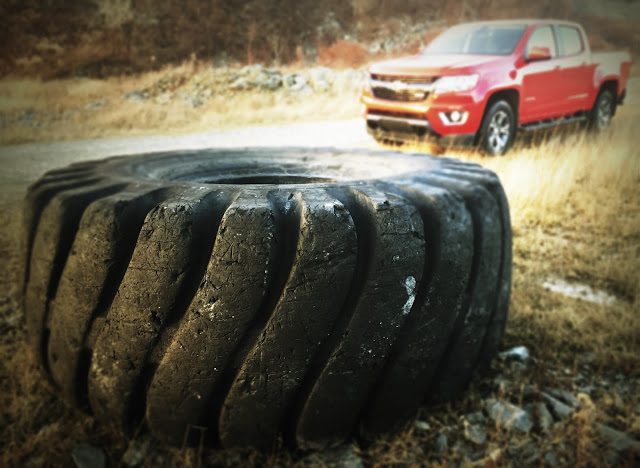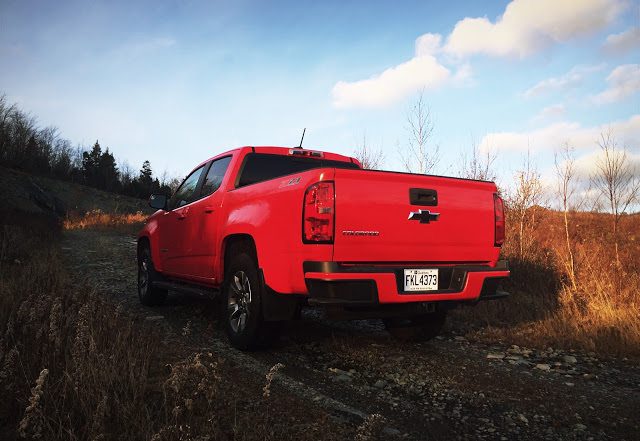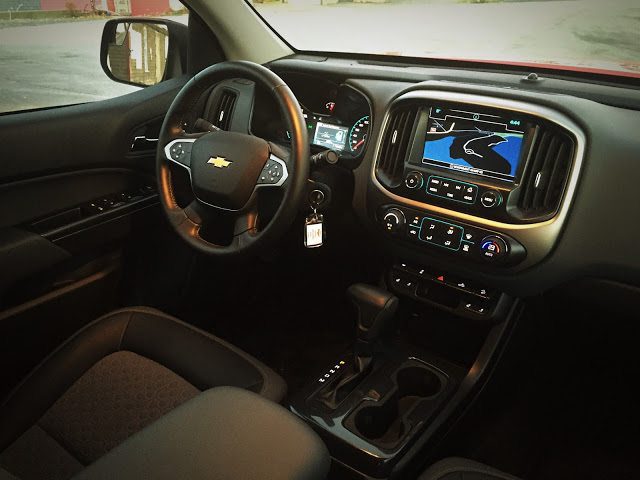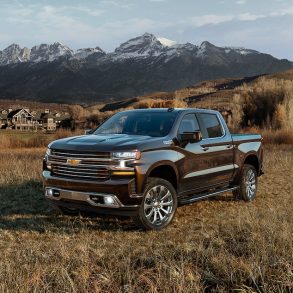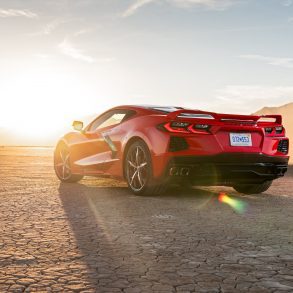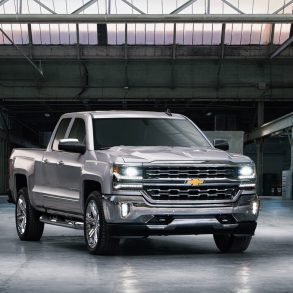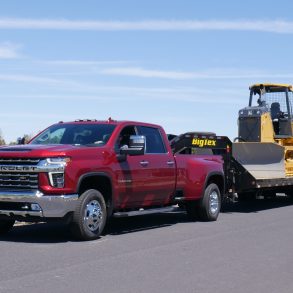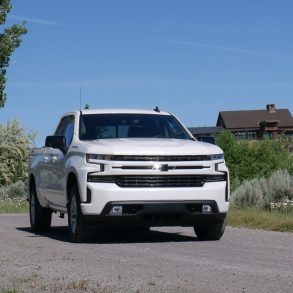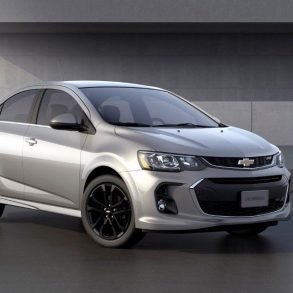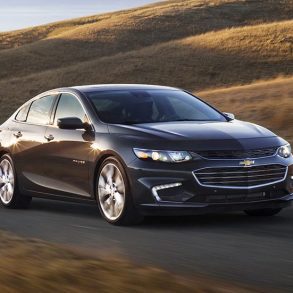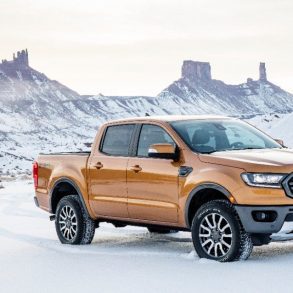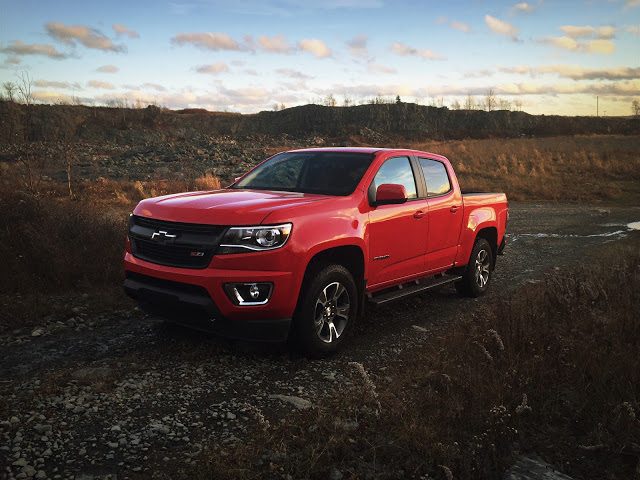
Can you save money by purchasing a smaller truck?
Sure you can. But perhaps not quite as much as you expected; perhaps not enough to make up for the loss of outright capability.
Construction site competence and passenger volume aren’t the only components in the equation, of course. But we wanted to discover the real monetary differences between midsize and full-size offerings.
We reviewed the new generation of GM’s midsize pickups already. Our judgements from a review of the 2015 GMC Canyon are nearly all applicable to the subject of this review, a 2016 Chevrolet Colorado. The differences between these twins in this particular case relate to the length of the bed and wheelbase. The Canyon had a longer wheelbase and a longer bed, and its ride quality was superior. Subjectively, the Colorado looks better for two reasons: I prefer the grille, and the shorter bed removes the Canyon crew cab long box’s awkward proportions.
| THE GOOD • Manageable size • Great styling • Sufficiently functional for five • Quick steering, solid braking • Plenty of real world capability |
THE BAD
• Ride not that great in short bed guise
• At $43K, missing some key features
• Verging on full-size thirst • Crew cab rear isn’t cavernous • Numerous chintzy bits inside |
Rather than review what is, for all intents and purposes, the same truck a second time, we’re doing something a little different. How much money can this truck really save you? Because we’ve spent extensive time with the Colorado and Canyon’s full-size sibling, the GMC Sierra, we’re using our real-world fuel economy results to pit GM’s new midsize offering against the far more popular full-size truck while also examining their interior and exterior dimensions, their range of capability, their total fuel costs, and their out-the-door prices.
Crew cab. Mid-level engine upgrade. Short box. Four-wheel-drive. 2016 Chevrolet Colorado vs. 2016 GMC Sierra.
INSIDE
In crew cab format, the biggest cabin available in either the Colorado/Canyon or the Silverado/Sierra, the Colorado’s rear occupants are treated to 35.8 inches of legroom, 56.1 inches of shoulder room, and 53.4 inches of hip room.
|
2016 CHEVROLET COLORADO
Z71 CREW CAB 4X4 Base Price: $32,495 * As-Tested Price: $42,680 * Drive Type: four-wheel-drive Transmission: 6-speed automatic Engine: 3.6L DOHC 24-valve V6
Horsepower: 305 @ 6800 rpm Torque: 269 lb-ft @ 4000 rpm Curb Weight: 4390 pounds
Length: 212.7 inches Width: 74.3 inches Height: 70.6 inches Wheelbase: 128.3 inches Tires: Goodyear Wrangler A/T Adventure Tire Size: 255/65R17 Cargo Volume: 1169 litres EPA City: 17 MPG EPA Highway: 24 MPG NRCAN OEE City: 13.5 L/100km
NRCAN OEE Hwy: 9.8 L/100km Observed: 20.1 mpg Observed: 11.7 L/100km * Canadian dollars, includes $1695 in fees |
In the Sierra, a crew cab’s rear occupants have an additional five inches of legroom (40.9), 10 inches of shoulder room (65.7), and seven inches of hip room (60.3).
Moreover, the Sierra offers seating for six, not the Colorado’s five. And the Sierra’s driver and front passenger are also treated to much more space, with 3.6 extra inches of legroom, 8.5 additional inches of shoulder room, and 6.5 additional inches of hip room.
OUTSIDE
No wonder the Sierra offers more space inside, it’s the far bigger truck on the outside.
A short box crew cab Colorado is 212.7 inches long, 74.2 inches wide, and 70.6 inches tall on a wheelbase stretching 128.3 inches. GM says there are 8.4 inches of ground clearance.
A short box crew Cab Sierra, on the other hand, is 17 inches longer (230), six inches wider (80), three inches taller (74.0) with ground clearance of 8.9 inches.
WORKING
The bigger truck is designed to do bigger things. A 5.3L V8-engined, four-wheel-drive 2016 GMC Sierra with GM’s Max. Trailering Package and a short bed can tow up to 10,800 pounds; 3,800 more than the 2016 Chevrolet Colorado 3.6L V6.
The payload of that Sierra is 2,130 pounds, 550 more than our Colorado’s maximum payload.
The Colorado’s cargo box is 62.7 inches long and 57.8 inches wide – 44.4 inches wide between the wheelhousings. Cargo volume totals 1,169 litres. The Sierra’s short box is 69.3 inches long and 64.6 inches wide – 51 inches wide between the wheelhousings – with total cargo volume of 1,512 litres, 29% more than the Colorado offers.
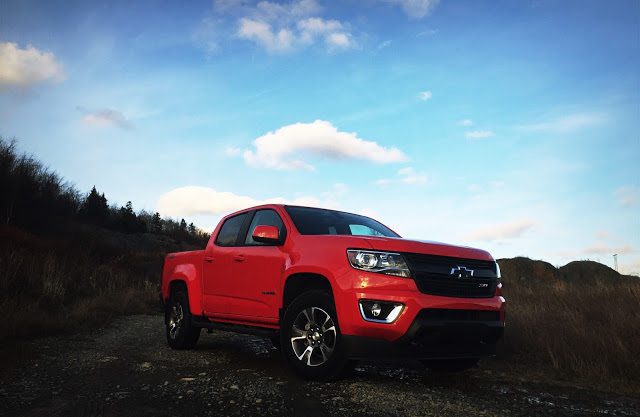 |
| All Photo Credits: Timothy Cain ©www.GoodCarBadCar.net Click Any Image For A Larger ViewPhotos Location: Dartmouth Crossing, Nova Scotia |
FUEL
The last time we drove one of GM’s new midsize trucks, a long-box crew cab GMC Canyon consumed 11 litres of fuel for every 100 kilometres of driving. But that test was completed in early summer. Our test of this 2016 Chevrolet Colorado Z71, a four-wheel-drive crew cab with the shorter box, was completed in the cooler temperatures of fall. Similarly, our test of a 2014 GMC Sierra, a four-wheel-drive crew cab with the shorter box and an identical twin of the Colorado’s big Silverado brother, took place in the fall of 2013.
The competitors, therefore, are on equal footing. True, the week-long tests were completed two years apart, and temperatures and distances and roads travelled weren’t identical. But over the course of a week, with real-world driving completed by the same driver, on a mix of city streets and highways, the 2016 Colorado 3.6L V6 drank at a rate of 11.7 L/100km; the Sierra 5.3L V8 achieved 12.8 L/100km.
But what does that difference of an additional litre over the course of 100 kilometres really mean for your fuel budget?
Let’s say you drive 15,000 kilometres per year and pay $0.954/L for regular fuel as we are this week. In the Colorado V6, those 15,000 kilometres will cost you $1,674. In the Sierra, the cost will rise to $1,832, an annual difference of just $158, a monthly difference of only $13, a weekly difference of only $3, and a daily difference of only $0.43.
For the sake of emphasizing the difference, let’s assume you drive 25,000 kilometres per year and the price of fuel will return to $1.45/L. In that case, the annual savings in the Colorado increases from $158 to a still hardly consequential $399.
MSRP
It’s highly unlikely that sitting on your local GM dealer lot are a Colorado and Silverado with identical interior equipment, let alone similar mechanical packages. But we can try to establish relative parity with GM’s online configurator.
Our Colorado rings in at $42,680, the cost of a top-trim Z71 Crew Cab with the short (128.3″) wheelbase and short (5’3″) box with a $795 navigation system, a $920 exterior convenience package, a $275 trailering package, $215 chrome recovery hooks, a $155 polished exhaust tip, $120 cargo tie-down rings, $165 bowtie emblem package, a $525 spray-on bedliner, $685 Bose audio, and $175 floor mats. GM Canada is currently discounting the price by $1,164 to $41,516.
A 2016 Chevrolet Silverado with the biggest cabin, the shortest available bed (5’8″), and the mid-grade 5.3L engine option – the Colorado’s 3.6L is the mid-grade engine in the midsize lineup now, between a four-cylinder gas engine and a new four-cylinder diesel – costs $41,020 but is then discounted by $7,985 to just $33,035. That’s a bare bones Silverado, however. To equip the 2016 Silverado 5.3L 4×4 like our Colorado – the features mentioned above plus standard Z71 touches like the leather interior, 17-inch alloys, backup camera, heated front seats, off-road suspension, sliding rear window, and more – would cost $51,565. But that price is currently discounted to $43,580.
That’s only an additional $2,064 for the more powerful, more capable truck, a 2016 Chevrolet Silverado 1500 1LT True North Edition
Historical Monthly & Yearly Chevrolet Colorado Sales Figures
2014 GMC Sierra 5.3L SLT Crew Cab 4×4 Driven Review
2015 GMC Sierra 6.2L SLT Crew Cab 4×4 Driven Review
2015 GMC Canyon SLE Crew Cab 4×4 Driven Review
CONSIDERATIONS
But hold on a second, aren’t there other factors to take into account?
On the one hand, there’s what I like to call the Supersize The Fries theory. This is North America – we want more. If there’s a bigger truck available, if it only costs a little bit more and only consumes a little bit more fuel, why not buy the bigger truck?
But on the other hand, there are individuals, admittedly rather few in number given the small/midsize pickup truck sub-category’s market share, who wouldn’t care if the Colorado cost just as much as the Silverado and consumed just as much fuel. It’s a small truck. A fairly large small truck, yes, but it’s clearly the smaller truck.
After spending two consecutive weeks with full-size pickup trucks earlier this month, the 2015 Ram 1500 Outdoorsman EcoDiesel and the 2015 Ford F-150 Platinum, the Colorado’s interior felt cramped, the ride quality was a bit jiggly, power wasn’t abundant at any point in the rev range, and I wasn’t piloting an all-conquering force in traffic.
But I pirouetted the Colorado through grocery store parking lots, easily squeezed the Colorado into parking spaces that simply wouldn’t have tolerated a much wider full-size truck, dove the Colorado across an eight-lane thoroughfare without batting an eye, placed the Colorado in our driveway with our Honda Odyssey without giving it any thought, travelled 100 kilometres in the Colorado using 1.1 fewer litres of fuel than in the bigger truck, and saved an imaginary $2,064 dollars.
All the while, I was safe in the knowledge that, if need be, the 2016 Chevrolet Colorado could still tow 7,000 pounds or live with 1,580 pounds in the bed. Sure, it’s smaller. But the Colorado is still very much a truck.
Timothy Cain is the founder of GoodCarBadCar.net, which obsesses over the free and frequent publication of U.S. and Canadian auto sales figures. Follow on Twitter @goodcarbadcar and on Facebook. The Colorado was supplied by GM Canada’s press office.

